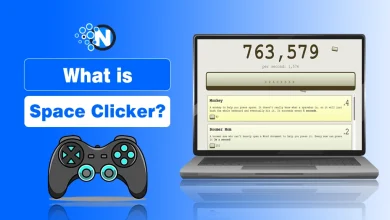What Programming Languages Polish Companies Use to Build Online Gaming Platforms

Every click, spin, and payout in an online game runs on code. In Poland’s fast-growing iGaming market, the programming language behind a platform often decides whether players experience smooth gameplay or frustrating lag. The tech stack defines performance, security, and trust.
Most leading Polish gaming platforms rely on a mix of C++, Java, Python, and JavaScript to keep systems stable and scalable. C++ powers game engines and graphics. Java handles server-side logic and transaction flows. Python is used for data analysis and security algorithms; JavaScript supports the interactive front end.
As iGaming experts explain, the right combination of languages allows platforms to process thousands of concurrent players without slowing down or compromising safety.
In this blog post, I will shed light on the programming languages that Polish companies use to build online gaming platforms.
Backend Languages Driving Poland’s Online Gaming Platforms
The backend defines how smoothly an online game runs. In Poland, developers rely mainly on Java and PHP to ensure speed, stability, and data security.
- Java handles server performance, transactions, and high traffic through multithreading and frameworks like Spring, keeping systems stable and scalable.
- PHP powers content, payments, and user interfaces. Its flexibility with APIs and frameworks such as Laravel and Symfony helps gaming platforms update features quickly and maintain security.
Together, these languages create a dependable foundation for Polish igaming platforms – fast, adaptable, and compliant with data protection standards.

Frontend Technologies Shaping the Player Experience in Polish Gaming
The frontend determines how players interact with online gaming: page load speed, game appearance, and site compatibility with other devices. The experts at CasinoRIX claim that a majority of the Polish sites rely on established web technologies to maintain gameplay stable, responsive, and easily understood. More details are available at https://casinorix.com/pl/.
JavaScript Frameworks (React, Vue)
React and Vue.js are widely used for building interactive gaming interfaces. They have real-time processing of player actions, dynamic game updates without page loads, and are stable to significant traffic conditions. They are also easier to add features or upgrade the current ones without disrupting the platform since they are structured in this manner.
HTML5 and CSS3
HTML5 ensures full browser compatibility and faster game loading, while CSS3 supports flexible layouts and smooth visual transitions. This combination keeps gaming lobbies accessible and visually balanced on both desktop and mobile screens.
WebSocket Protocols
WebSocket creates a direct link between the gaming server and the player’s screen. It’s essential for live dealer tables and multiplayer rooms, allowing instant updates for every action or result.
Together, these technologies help Polish gaming sites stay reliable, visually consistent, and quick to respond – the qualities players notice first.
Supporting Tools and Systems Behind the Platforms
iGaming platforms rely on more than game code. They use databases and payment systems that keep operations secure, compliant, and connected to Poland’s financial network. CasinoRIX experts note that these tools determine how reliably a platform runs.
Databases (MySQL, PostgreSQL, MongoDB)
MySQL and PostgreSQL are used to process structured financial data, such as bets and payouts, which are accurate and fast. MongoDB stores behavioral and analytical data for real-time analysis; compliance with Polish security standards depends on how the servers and access controls are configured.
Payment Gateways
Gaming platforms rely on structured databases and secure payment gateways to link to Poland’s banking networks. Polish gambling platforms support BLIK and Przelewy24 for fast deposits, as well as withdrawal options when the operator provides them. These methods work with local banks and minimize delays. The Ministry of Finance and the National Revenue Administration require clear transaction records and identity checks to prevent fraud and unauthorized account activity.
Security Layers Built into the Platform Code
Security is central to every licensed platform in Poland. Operators embed protection systems directly into the platform code to meet strict data and identity requirements. CasinoRIX experts note that encryption and authentication tools form the base of any compliant gaming system.
SSL Encryption
All player data passes through encrypted channels protected by TLS 1.3 with 256-bit keys. This prevents interception and keeps transactions private, matching the same standards used in Polish online banking.
Two-Factor Authentication Modules
Two-factor authentication (2FA) is the second level of security in the form of SMS, email, or biometric checks. Gaming platforms have built-in software like Google Authenticator or Authy so that the accounts do not get accessed by unauthenticated users, and the suspicious logins can be identified instantly.
These factors have been combined to make the Polish gaming platforms secure, regulated, and reliable among players.
Conclusion: Language Choices Show Market Priorities
The technologies of the Polish igaming platforms are designed to be stable, secure, and compliant. Each programming choice serves a practical purpose, to keep systems reliable under heavy load and meet the country’s strict data and licensing standards.
According to experts, developers focus on tested, scalable languages that ensure smooth operation and consistent performance. The result is a technical base that supports fair play, fast transactions, and the level of safety expected from licensed operators in Poland.




